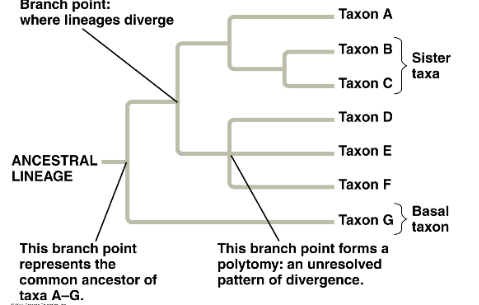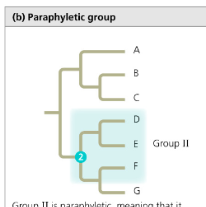AP Bio Unit 7
1/99
Earn XP
Description and Tags
Name | Mastery | Learn | Test | Matching | Spaced |
|---|
No study sessions yet.
100 Terms
Aristotle
Recognized variety in organism and inheritance
Great chain of being
Carolus Linnaeus
Swedish naturalist and father of taxonomy
Developed a classification system that was for “tree like” than a ladder
Thomas Malthus
British economist and demographer
“Struggle for existence”
Human population increases at a faster rate than out agriculture, therefore out food supply can run out
Darwin realized that same could be said for every species
Carrying Capacity
The population that an environment can support
When resources are plentiful, population can grow fast.. less competition
George Cuvier
Paleontologist
Helped prove extinction through his studies of fossils
Charles Lyell and James Hutton
Geologists
Theory of Uniformitarianism (Earth has always changed in uniform ways and that the present is the key to the past.)
Jean Baptiste de Lamarck
Developed a theory of evolution
Use and disuse
The more the body part was used, the larger it got
Acquired Characteristics'
Characteristics acquired during an organisms lifetime can be passed to their offspring
Charles Darwin
British naturalist
Traveled and collected data on the HMS Beagle for almost 5 years
Noticed “Artifical selection” in dogs, asked if it could be applied to nature
Alfred Russel Wallace
Sent an essay that aligned with Darwins work, about the theory of natural selection
Darwin’s Idea
Descent with modification
Members of a population often vary in their inherited traits
All species can produce more offspring than the environment can support, this creating competition
Survival of the fittest
Who is the ‘strongest’
the ones who produce the most sucessful offspring
Natural Selection
Process in which individuals that have certain heritable traits survive and reproduce at a higher rate than do other individuals because of those traits
Fossils
Only form under ideal conditions
Used to estimate age or organisms
Homologous structures
Structures that are structurally similar but serve different purposes
Indicates common ancestry
Ex: Human hand and bat wing
Vestigial Structures
Body part not used anymore but still remains in the organism
Ex: appendix
Analogous structures
Serve the same purpose but built differently
Do not indicate common ancestry
ex: wings of birds and insects
Embryological evidence
Similar structure on the embryos of all vertebrates
Some disappear
Ex. tail, gill slits
Biochemical evidence
Similarities in DNA sequences and amino acid sequences
Convergent evolution
Organisms evolve similar structures or similar adaptations to meet the same environmental challenges but do not share recent common ancestry
Instead they share analogous structures
Phylogeny
Evolutionary history of a species or group of species
ex. the evolutionary history of birds
A thing, not something you do
Systematics
The process of classifying things and figuring out their evolutionary history
Uses actual data, constantly changes based on new information
Taxonomy
Naming things and classifying things based on a set of characteristics
Binomial Nomenclature
Using a 2 part scientific name for every species
First part is the genus name
Second is the specific epithet
ex. Homo sapien
Hierarchical Classification
Domain
Kingdom
Phylum
Class
Order
Family
Genus
Species
Dumb King Phillip came over for great spaghetti
Taxon
Any named group at any level
ex. Kingdom - Animalia

Phylogenetic Trees
Branching diagram that:
Shows common ancestry
Displays differences
Matches taxonomy
New info may alter things

Branch point
Term used in phylogenetic trees
Common Ancestor

Sister taxa
Terms used in phylogenetic trees
Groups that share an immediate ancestor not shared by other groups

Basal taxon
Terms used in phylogenetic trees
Lineage that diverages from all the other groups early on
Data used to make phylogentic trees
Fossil records - youngest species are in the upper strata
Molecular homologies - compare amino acid and DNA sequences
Morphological homologies - homologous and vestigial structures
Cladistics
Way of determining phylogeny by looking at homologous structures
Based on: Common ancestry and shared characteristics
Clades
Includes a common ancestor and things descended from it
Like taxons, but a clade is monophyletic, not paraphyletic or polyphyletic

Monophyletic
An ancestral species and all of its descendants
Matches

Paraphyletic
Ancestral species and some descendants
Doesn’t match

Polyphyletic
Has several species but not the ancestor
Doesn’t match
Shared primitive character
A character that extends beyond the taxon you are defining
Shared derived character
Evolutionary novelty unique to a clade
Branch length
The longer the branch, the longer the species has been around
Molecular Clocks
Trying to measure the absolute time of evolutionary change
Microevolution
A change in the genetic makeup of a population from generation to generation
What causes variation?
Mutations - most nucleotide changes do not have an effect on phenotype
Sexual reproduction
Chromosomal changes
The environment
Population
Localized group of individuals that are capable of interbreeding and production fertile offspring
Species
Groups of populations whose members have the potential to interbreed and produce fertile offspring but are unable to do so with other populations
Gene pool
The total of all alleles of all the genes in a population at a given time
Fixed allele
Only one allele for a gene
No variation among members of a population with that gene
Hardy-Weinberg Equilibrium
If the frequencies of alleles and genotypes doesn’t change from generation to generation, then it is in equilibrium and is not evolving
If it does change, then the population is evolving
Hardy-Weinburg Conditions that must be met
Large population
No gene flow
No mutations
Random Mating
No natural selection
Genetic drift
Change in gene pool due to luck or chance
Bottleneck effect
When lots of members die and the surviving population is no longer representative of original population
Founders effect
When some individuals become isolated from the larger population
Leads to inbreeding
Genetic Drift
More likely in smaller populations
Can cause allelic frequency to change randomly
Loss of variation
Gene flow
The transfer of alleles into or out of a population
Usually reduces differences between populations
Natural selection
Some members of a population have more reproductive success than others
Because genes better match the environment
Relative fitness
Contribution of a genotype to the next generation compared to another genotype
Sterile organisms - zero relative fitness
Directional Selection
Favors one extreme for a phenotype
Usually occurs when environment changes or populations move
Distruptive selection
When conditions favor both extremes
Usually leads to new species
Stabilizing selection
Acts against extremes and favors the average individual
Balancing selection
When natural selection maintains stable frequencies for 2 or more phenotypic forms in a population
Macroevolution
Changes above the species level
Speciation
Formation of a new species
Morphological Species concept
Characterizes species by body characteristics
Con: Analogous structures and convergent evolution
Paleontological Species concept
Focuses on fossil record
Con: They’re all dead
Ecological Species concept
Focuses on a species niche
Niche - the role or job a species has in a community
Cons: Assumptions get made, difficult to define a species niche
Phylogenetic Species approach
Each species has a unique genetic history by comparing physical and molecular differences
Cons: Genetic differences are a difficult way to separate species
Biological Species approach
Members of the same species have to be able to interbreed and produce fertile offspring
Cons: extinct species
Reproductive Isolation
Produces new species
Many types that fall into one of two categories
Prezygotic Reproductive Isolation
Keeps two things from mating
Postzygotic Reproductive Isolation
Keeps offspring from mating
Habitat Isolation
Two different species occupy different geographical areas
Temporal Isolation
Species breed at different times
ex. day, year, dif plants bloom at dif times of the year
Behavioral Isolation
Courtship rituals are unique to a species
ex. bird mating calls
Mechanical Isolation
Morpholgical differences prevents mating
ex. plants with different pollinators
Gametic Isolation
Sperm cannot fertilize egg
Reduced hybrid viability
Genes of different parent species may interact and impair hybrid’s development
Hybrids are sterile
Meiosis fails becuase of different chromosome structure or number
Hybrid Breakdown
Hybrids are fertile but when they reproduce their offspring are weak

Allopatric Speciation
When population is divided into geographically isolated populations
Sympatric Speciation
Speciation that occurs when populations overlap
Due to chromosomal changes and non-random mating
Hybrid zone
Two species interbreed and produce fertile offspring
Gradualism
Gradual changes lead to new species at regular intervals
Punctuated Equilibrium
Period of stasis interrupted by periods of rapid change
Majority of changes occur at the start
Stage 1
Where did the first cells come from
Abiotic synthesis of organic molecules
Amino acids and nucleotides
Stage 2
Where did the first cells come from
The building of polymers from monomers
Polymers have been produced by dropping monomers onto hot clay, sand, rock
Stage 3
Where did the first cells come from
Protocells - packaging polymers into membrane bound structures that maintain internal chemistry
Stage 4
Where did the first cells come from
Origin of self-replicating molecules, making inheritance possible
Early earth’s atmosphere
Electron adding
Water vapor, CO2, nitrogen, methane, ammonia
Oceans were a ‘primitive soup’ of organic molecules
Stanley Miller and Harold Urey Expirement
Proved that energy could create monomers
Other hypothesis on how monomers were created
Volcanic eruptions
From Space - meteorites
Thermal vents and submerged volcanoes
Started in ice - eutectic freezing made it possible
Protocells
Aggregates of abiotically produced molecules surrounded by a membrane or
membrane-like structure
Ribozymes
RNA molecules with catalytic capabilities
Self-splicing and replication
Transports molecules
Relative dating
Fossils buried deeper are older
Can compare strata across continents
3.5 - 3.9 Billion Years ago (BYA)
Life begins
3.5 - 2.0 BYA
Prokaryotes dominated Earth
2.7 BYA
oxygen accumulates
Indicates photosynthesis
2.1 BYA
Eukaryotes
Endosymbiant
A cell that lives inside a host cell
1.2 BYA
Multicellularity - the first multicellular organisms began as colonies
543 MYA
The Cambrain Explosion
Huge diversification of animals
500 MYA
Colozination of land
Needed to prevent dehydration
Adaptive Radiation
Periods of change in which many new species form from one species
Molecular changes
Small changes in DNA may lead to big changes